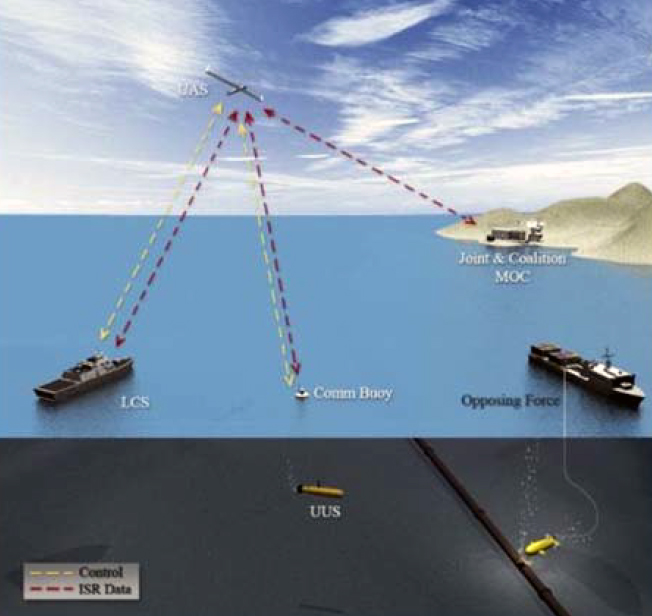UUVs, Unmanned Undersea Vehicles maximize ISR observation capabilities, expands communications networks, conducts hazardous underwater tasks, minimizes risk – as well as their deployable numbers. China’s People’s Liberation Army Navy (PLAN) is confidently resting on its recent advancements in artillery, anti-ship weapons, mines, and missiles as a means to overwhelm and deter American and Allied interest and sovereignty in the Pacific. The UUV is an asset which can assist in the mitigation of the PLAN risks as an integrated force enabler with joint-defense systems [featured image].
UUVs are set to be part of U.S. defense strategy and will assist in filling the U.S. submarine gap, against China and Russia. On the forecast of UUV, Secretary of Defense Ash Carter, in the Submitted Statement — House Armed Services Committee (FY 2017 Budget Request), stated: “It increases funding for unmanned undersea vehicles (UUVs) by over $100 million in FY 2017, part of a total $173 million in FY 2017 and $1.2 billion over the FYDP that invests in, among other areas, rapid prototyping of UUVs in multiple sizes and diverse payloads – which is important, since UUVs can operate in shallow waters where manned submarines cannot. And it includes $2.2 billion in FY 2017 and $6.4 billion over the FYDP to continue procuring the advanced P-8A Poseidon maritime patrol and surveillance aircraft. Together, all these investments – totaling $8.2 billion in FY 2017, and $41.9 billion over the next five years – will ensure we continue to have the most lethal undersea and anti-submarine force in the world.”
–
As it watches China build up its presence in the South China Sea, one reclaimed island at a time, the US military is betting on a new technology to help retain its edge — submarine drones.
During the past six months, the Pentagon has started to talk publicly about a once-secret program to develop unmanned undersea vehicles, the term given to the drone subs that are becoming part of its plan to deter China from trying to dominate the region.
Ashton Carter, the U.S. defense secretary, made special mention of drone subs in a speech about military strategy in Asia and hinted at their potential use in the South China Sea, which has large areas of shallower water.
The Pentagon’s investment in subs “includes new undersea drones in multiple sizes and diverse payloads that can, importantly, operate in shallow water, where manned submarines cannot”, said Mr. Carter, who visited a US warship in the South China Sea on Friday.
Read More: The Financial Times
Featured Image – The communications buoy’s low probability of intercept (LPI) data are relayed via a small tactical unmanned aircraft system (STUAS) to other units in the area and to the Joint Maritime Operations Center (JMOC) ashore. The commander on the LCS directs the UUV and the UAS to provide persistent intelligence, surveillance, and reconnaissance (ISR) and command and control (C2) relay support. Simultaneously, the UAS transmits corroborating ISR data on a suspect vessel near the UUV anomaly. Thanks to a recently fielded, advanced technology propulsion upgrade, the STUAS is able to stay on station for 24 hours before being relieved U.S. Department of Defense.
Already have an account? Sign In
Two ways to continue to read this article.
Subscribe
$1.99
every 4 weeks
- Unlimited access to all articles
- Support independent journalism
- Ad-free reading experience
Subscribe Now
Recurring Monthly. Cancel Anytime.











COMMENTS
You must become a subscriber or login to view or post comments on this article.